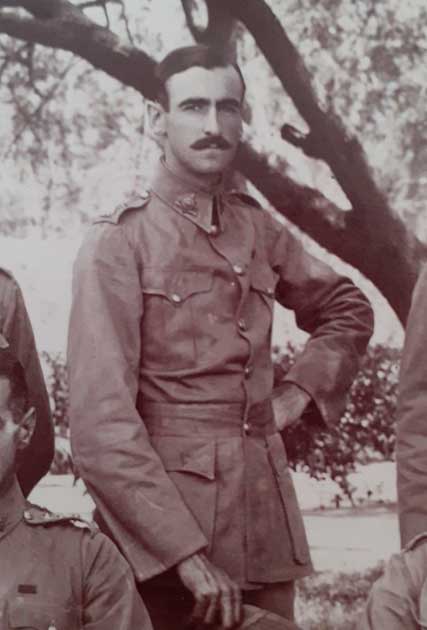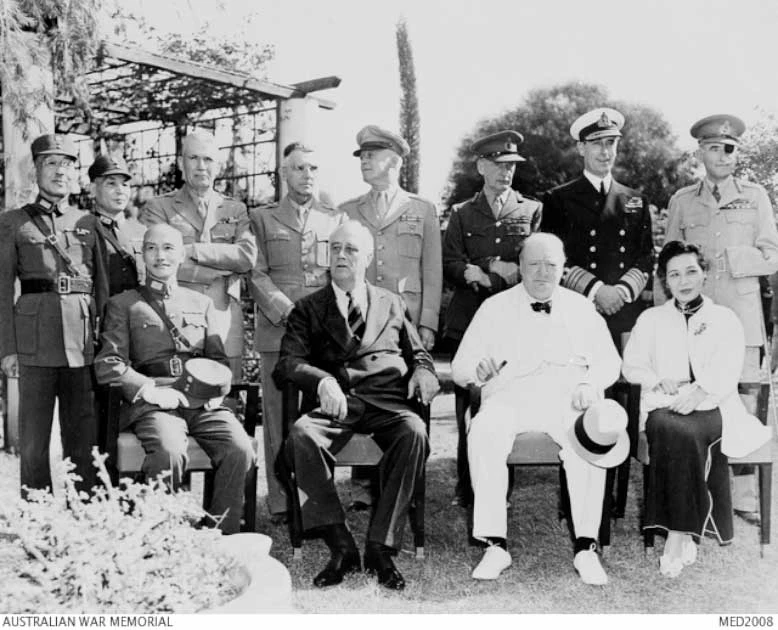When a person joins the Army as a professional soldier, he knows that death can knock at his door at any time. The only solace a soldier finds is that maybe they can make a difference, or maybe their name will be remembered for perpetuity as a martyr and patriot. And just maybe, if they live long enough, they might make their fortune.
However, on those rare occasions when life and luck work together, the unkillable soldier is created. There are many soldiers who have lived long enough to retire as a veteran, but rarely do war and bravery creates stories of war-hardened heroes who live to tell the tale.
Sir Adrian Carton de Wiart was one of those rare personalities who survived decades of war and conflict, only to live till ripe old age. His years in service spanned over six decades, and he successfully fought three major wars, the Boer War, World War One, and World War Two.
He survived these wars but lost one eye and one arm by the time he retired as a war hero. His long military career and eventful life read like something out of an adventure novel.
This is his extraordinary story.
The Early Life of Sir Adrian Carton de Wiart
Adrian Carton de Wiart was born in Brussels, Belgium, on May 5, 1880. Officially, he was born to the Belgian couple Léon Constant Ghislain Carton de Wiart and Ernestine Wenig. However, because of his endurance and illustrious career, rumors followed him everywhere that he had royal blood in him.
Many speculated that he was the illegitimate son of the Belgian King Leopold II. His early life was spent in Belgium, England, and Egypt. At the young age of 11, he was sent to a boarding school in England for his studies. His further studies were pursued at Balliol College, Oxford.

At the turn of the 20th century, young De Wiart stood at the cusp of the great adventure that his life would eventually become. In 1899, the young Carton de Wiart left Oxford to join the British Army.
His journey into military service started from a lie when he claimed to be 25 years old and enlisted under a false name. He enlisted as Trooper Carton when he was merely 20 years old, joining the army at the peak of the Second Boer War.
- Götz von Berlichingen: How a One-Armed Knight Rose to Power
- How did Eumenes Rise from Secretary to Military Genius?
It seems that an enthusiasm for combat and a personal bravery were what led Sir Adrian Carton de Wiart to the battlefield. He knew he was made for war and was determined to join the war, on either side.
The Legend Begins
Throughout his career, Sir Adrian Carton de Wiart suffered many injuries. The astounding number of injuries he recovered from would have killed a more weak-hearted man. He was shot in the leg, face, groin, ankle, head, and ear, and received many other lesser injuries.
The first of his war wounds occurred in South Africa, where de Wiart fought the Second Boer War. He was shot both in the stomach and the groin. Following his injuries, he was sent back to England to recover.
By this time, his family back in Belgium had become aware of his decision to join the army. His father was disappointed that Adrian’s studies were left incomplete. However, the decision eventually met with acceptance from his family, who saw his determination.
After a brief period in England for recovery, he joined his duties again as part of the Imperial Light Horse that headed to South Africa. By this time, he started using his own name as a soldier.
When the Second Boer War finished, Sir Adrian was sent to India, where he stayed long enough to become a British Citizen, marry an Austrian countess, and start a family. His stay in India was relatively uneventful as compared to other commissions in his military career.
The World Wars
However, this peaceful life could not last. In 1914, with the world on the brink of World War I, Carton de Wiart had to answer the call of duty and jump into combat. During World War I, he served as part of the Somaliland Camel Corps.
When he was posted in British Somaliland, he was caught in a crossfire when attacking an enemy fort. As a result, he suffered grave injuries to his face and lost an eye. He also lost a portion of his ear during his recovery from the wounds. The British Army honored his contributions to this crucial battlefield with a Distinguished Service Order.
- Faces of War: How the Tin Noses Shop Helped Disfigured Soldiers
- An Ancient Hero: Who was the Griffin Warrior of Pylos?
By now it was becoming clear that this man was made of sterner stuff than normal, and indeed what made Sir Adrian Carton de Wiart the unkillable soldier was his attitude and passion for combat. After the loss of his eye, he could have retired as a young war hero.
However, he saw the loss as a boon because it helped him return to Europe, where more action awaited him. It seemed as if the injuries and losses only motivated him more toward war.
In early 1915, Sir Adrian was posted to the Western Front of Europe, where he became a military leader of British troops. He successfully led three infantry battalions and a brigade on the Western Front.
By the end of World War I, he suffered seven more injuries that would have crippled any other soldier, but not Carton de Wiart. Many of his injuries were very painful and severe. For example, in the Battle of Somme, he was shot in the head, but once again recovered.
It seemed as if the injuries and pain only pushed Sir Adrian towards more ruthlessness on the field. Such was his tolerance and ability on the field that when his left hand was left shattered in combat, he tore his destroyed fingers from his hand himself because the war physicians would refuse to do it.

Later, his left hand was amputated to stop the infection from spreading. Even after losing one arm, he would not step away from the battlefield. Later, Sir Adrian was awarded the Victoria Cross, the British Army’s highest honor, for his bravery in the Battle of Somme. And he somehow came through the whole affair with a smile: although his war injuries were crippling and life-altering, Sir Adrian would look back on his experience in World War I as an enjoyable one.
In the year 1919, he even went on to survive two plane crashes which cemented his title as truly unkillable. But not even advancing age would hold Carton de Wiart, who went on to fight in the Second World War, leading a British mission in Yugoslavia aged 61. Only after the war would he finally retire.
His later life was also ridden with adventures, heroics, and injuries. However, Carton de Wiart went on to live to the age of 83, dying in 1963 of natural causes. Even in his death, he upheld the title of the Unkillable Soldier, surpassing the British life expectancy age by 13 years.
Top Image: Sir Adrian Carton de Wiart. Source: Cecil Beaton / Public Domain.
By Bipin Dimri